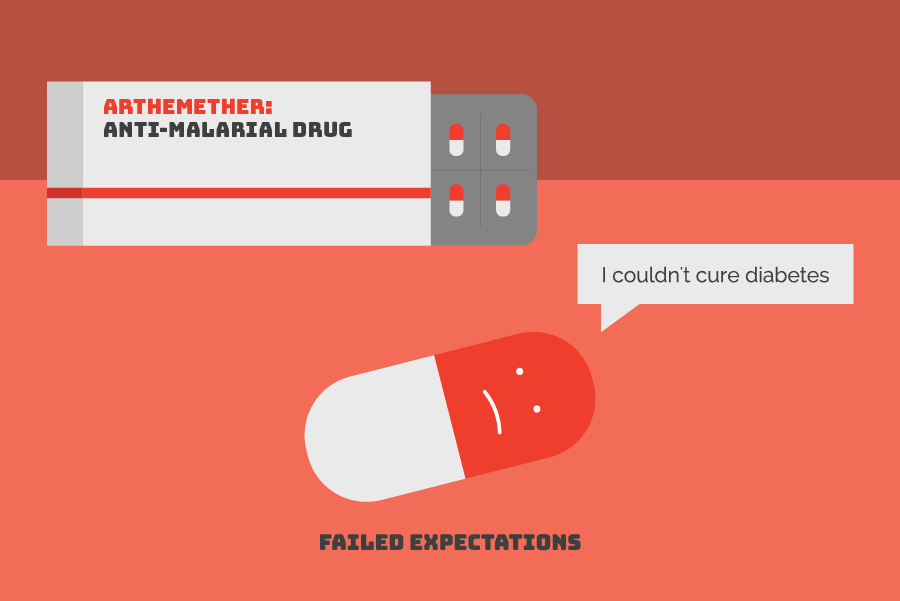
UC Davis study discredits paper’s claims of simple path to diabetes cure
A key tenet in the scientific method is showing that an experiment, holding all other variables equal, will yield the same result every time. Any paper published in a peer-reviewed journal will come under scrutiny from the scientific community, even more so if the article comes from a world-renowned publication like Cell.
When Cell first published an article in January stating that a commonly available treatment for malaria could reverse the effects of Type 1 diabetes, Mark Huising, an associate professor in the Department of Neurobiology, Physiology and Behavior, expressed a mixture of excitement and skepticism.
“My first reaction was ‘wow, this would be great if this was true’,” Huising said. “What this paper suggested you could do is that they could tap into a process that had been described by a couple of different labs, ours included, where alpha cells in the pancreas can turn into beta cells.”
Diabetes is a disease in which the body cannot produce insulin, the hormone that signals the body to uptake sugar from the bloodstream. Insulin is produced in the pancreas by beta cells. In the case of Type 1 diabetes, the immune system attacks beta cells, so the body can no longer regulate blood sugar levels. The challenge in restoring beta cell mass is that they are difficult to grow in lab, so researchers have attempted, instead, to convert alpha cells, the counterpart to beta cells and unaffected by diabetes, to beta cells.
The Cell paper, published by a consortium of European and American researchers, claimed that the antimalarial drug Artemether could do just that, providing hope that a new diabetes treatment, or even a cure, was just around the corner. However, the drug failed to live up to expectation.
“We never saw any alpha to beta transdifferentiation [conversion],” Huising said. “In fact, what we found was that really high doses of the drug that this study used […] completely blocked the function of any beta cells that were there. So not only did the drug not turn alpha cells into beta cells, as was suggested, it completely blocked the function of beta cells that were still around.”
The original paper sourced its samples from cell lines, cell cultures that reproduce indefinitely due to mutation, and therefore can be easily grown. They then screened the cultures for chemicals indicating insulin production. The problem with this method, Huising said, is that, because of the immortalizing mutation, the biological properties of cells from cell lines are far removed from those one would find in the cells of a living being.
And since the cells the paper used were cultivated in a lab rather than harvested from a fresh source, the study ignored the effects Artemether could have on other cells in the body. Sharon Lee, a second-year graduate student in the biochemistry, molecular, cellular and developmental biology graduate group, said that there is more to disease treatment than the cells being targeted.
“In the human body, you don’t just have alpha cells,” Lee said. “In a cell line, then yes, there are only alpha cells. If you were to give this to a human as a therapeutic treatment, then you are injecting into an environment where there are all different cell types.”
In the paper, Huising and his team aimed for a more grounded methodology, one which tried to get as close to using and observing real pancreatic cells. They used pancreatic cells from living mice, Lee said, more difficult to work with than cell lines, but which more closely mirror real life interactions. Rather than using high-throughput screening of chemicals, that while time-efficient, does not directly observe the cells, the lab manually counted cells.
The oversights in methodology on the part of the original researchers left Huising with mixed feelings about what has been dubbed the “replication crisis”, wherein large scientific claims are unable to be verified by the scientific community. On one hand, errors and incorrect conclusions are inevitable. On the other hand, the rush to publish studies can lead to experiments that are fundamentally flawed, or lacking in procedural rigor, eroding the credibility of the scientific establishment.
“Every time our field or any medical type of big story [comes out] and doesn’t hold up, the general public sees these big, splashy stories […] they think ‘oh, maybe this will be beneficial to me’,” Huising said. “Then [afterward], they hear nothing about it. Nothing […] will ever trickle down to people who, in this case, have type 1 diabetes.”
Talitha van der Meulen, an assistant project scientist in the Department of Neurobiology, Physiology, and Behavior and co-author of the paper along with Huising and Lee, stressed that while reproduction papers don’t always get front-page news, it is an important facet of the scientific process.
“It is important to scrutinize data published by others,” van der Meulen said. “What we did here is not common practice and not glorious, but we [felt] that it was the right thing to do.”
Despite the negative results of the study, Huising, Lee and the rest of the group continue to work to find ways to convert alpha cells to beta cells, and hopefully develop an effective cure for diabetes.
Written by: Dylan Hendrickson — science@theaggie.org



